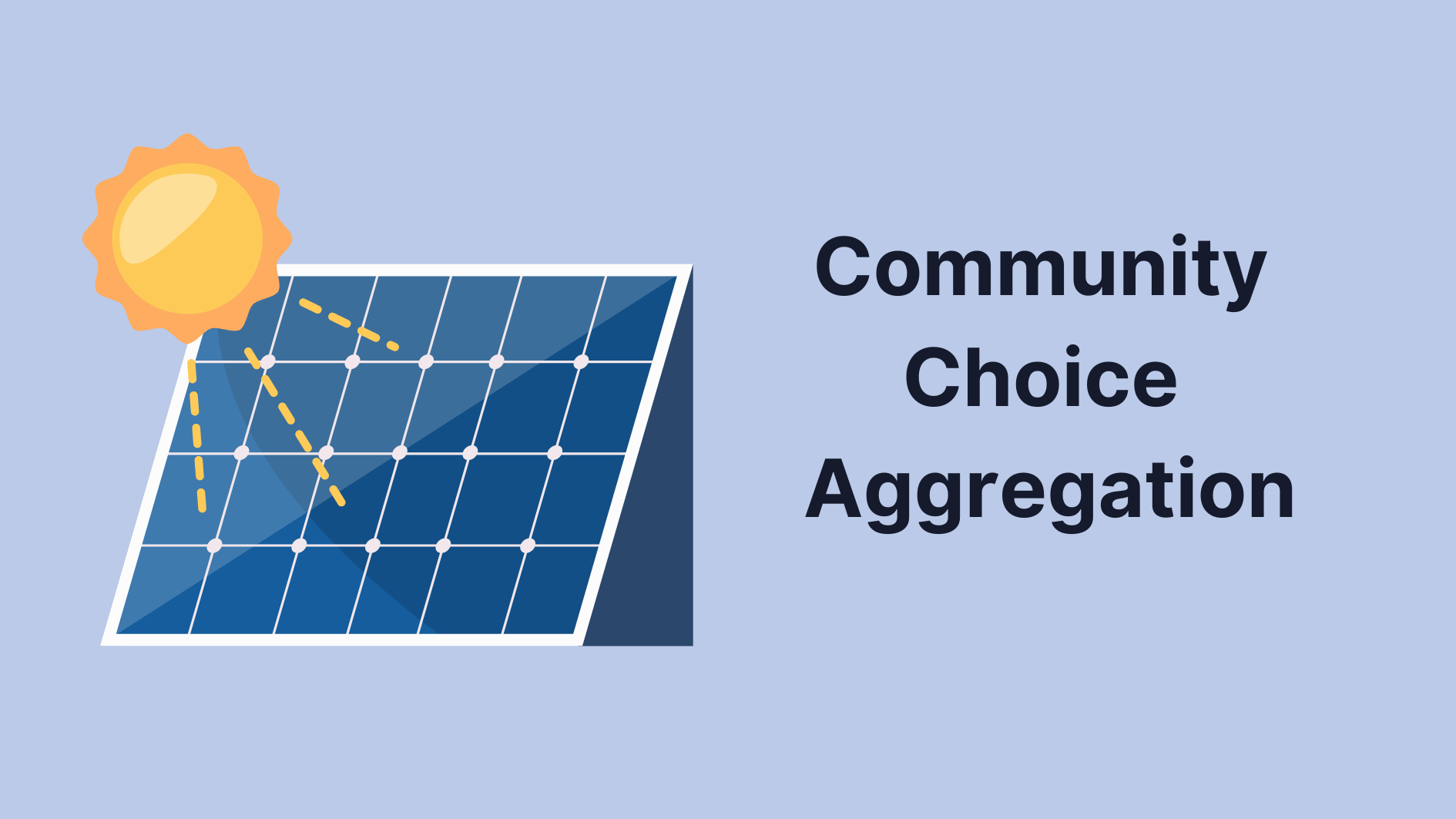Image source: Canva.com
As the push for sustainable energy solutions grows, homeowners and communities are exploring various options to reduce their carbon footprint and energy costs. Two prominent alternatives are Community Choice Aggregation (CCA) and rooftop solar panels. Each offers distinct advantages and challenges, and understanding the differences between them can help you make an informed decision about which approach best suits your needs.
This article will compare Community Choice Aggregation and rooftop solar, highlighting their key features, benefits, and limitations. By examining how each option works, their impact on energy bills, and their contributions to sustainability, we aim to provide a clear perspective on how these solutions can fit into your energy strategy. Whether you’re considering a community-based approach or a personal solar installation, this comparison will help you evaluate the most effective path to achieving your energy goals.

Understanding Community Choice Aggregation (CCA)
Community Choice Aggregation vs. Rooftop Solar
Environmental Impact
Both Community Choice Aggregation (CCA) plans and rooftop solar panels offer environmental benefits, with CCAs often including a significant portion of solar energy from large-scale solar farms. However, generating solar energy on your own property generally offers a greater reduction in your carbon footprint.
CCAs may only use 30-50% renewable energy, with the remainder coming from traditional fossil fuels, which still contribute to greenhouse gas emissions. In contrast, a rooftop solar system directly offsets your household’s carbon emissions, as you are producing clean energy on-site. Additionally, solar panels are often installed on rooftops or other existing structures, minimizing the impact on undeveloped land compared to large-scale renewable energy projects.
Economic Considerations
When evaluating Community Choice Aggregation (CCA) and rooftop solar, economic factors play a crucial role in determining which option is more advantageous for your energy needs and budget. Here’s a breakdown of the economic considerations for each:
Community Choice Aggregation (CCA)

Cost Structure
CCA programs typically involve purchasing electricity from renewable sources on behalf of a community. As a participant, you receive a single bill from your utility company, which includes the cost of energy procurement and delivery. The cost of energy through a CCA is often lower than traditional utility rates due to the collective purchasing power of the community. However, you remain subject to standard utility charges for distribution and transmission.
Savings Potential
Participants in CCA programs may benefit from lower electricity rates compared to their local utility’s default service. CCAs leverage bulk purchasing and competitive bidding to secure better rates, potentially resulting in modest savings on your overall energy bill. However, savings can vary depending on the CCA’s contract terms and market conditions.
Upfront Costs
There are typically no upfront costs to join a CCA program. Enrollment is often automatic for residents within the CCA’s service area, and opting out is generally straightforward if you prefer to remain with your current utility or choose an alternative energy supplier.
Long-Term Costs
While CCA programs can provide cost savings, they do not eliminate utility charges or offer incentives for energy efficiency or conservation measures. Long-term costs depend on the CCA’s ability to negotiate favorable rates and the overall stability of energy prices in the market.
Rooftop Solar

Cost Structure
The cost of installing rooftop solar panels includes the purchase and installation of the system, which can be substantial. However, various financing options are available, such as solar loans, leases, and power purchase agreements (PPAs), which can help reduce or eliminate upfront costs. The cost of solar panels has been decreasing, making them more affordable over time.
Savings Potential
Rooftop solar can lead to significant savings on your electricity bill, particularly if you are able to generate enough power to cover a substantial portion of your energy needs. By producing your own electricity, you can reduce or eliminate your dependence on grid power, which can result in substantial long-term savings. Additionally, solar panel installations can benefit from federal and state incentives, such as tax credits and rebates, which can offset the initial investment.
Upfront Costs
Installing rooftop solar panels typically requires a significant upfront investment. While financing options can make this more manageable, the initial costs are still higher compared to participating in a CCA program. Homeowners should also consider potential costs for maintenance and repairs over the lifespan of the system.
Long-Term Costs
Once installed, rooftop solar panels generally incur minimal ongoing costs beyond maintenance. Solar systems have a long lifespan (often 25 years or more), and many come with warranties that cover performance and equipment. The primary long-term cost consideration is the maintenance of the system and potential repairs.
Both Community Choice Aggregation and rooftop solar offer distinct economic benefits and challenges. CCA programs provide lower energy rates with no upfront costs and can deliver modest savings, but they do not eliminate utility charges or provide direct incentives for energy efficiency. In contrast, rooftop solar requires a higher initial investment but offers the potential for significant long-term savings and independence from utility rates, with various financing options and incentives available.
Ultimately, the choice between CCA and rooftop solar depends on your individual financial situation, energy consumption patterns, and long-term goals. By carefully considering the economic implications of each option, you can make an informed decision that aligns with your budget and sustainability objectives.
CCAs and Rooftop Solar: Can They Work Together?

Yes, Community Choice Aggregation (CCA) plans and rooftop solar systems can complement each other. Most residential solar panel systems are grid-tied, allowing you to remain connected to the utility grid and draw electricity when needed, such as during nighttime or cloudy periods.
You can participate in a CCA plan even if you have a rooftop solar system. A CCA plan provides renewable energy from the grid, which means that when your solar panels don’t cover your total electricity needs – due to seasonal variations or high energy consumption – you can purchase the additional electricity you need through the CCA.
This combination allows your home to operate primarily on renewable energy, maximizing both your environmental benefits and savings. By integrating rooftop solar with a CCA plan, you can further reduce your carbon footprint while ensuring a reliable and sustainable power supply.





